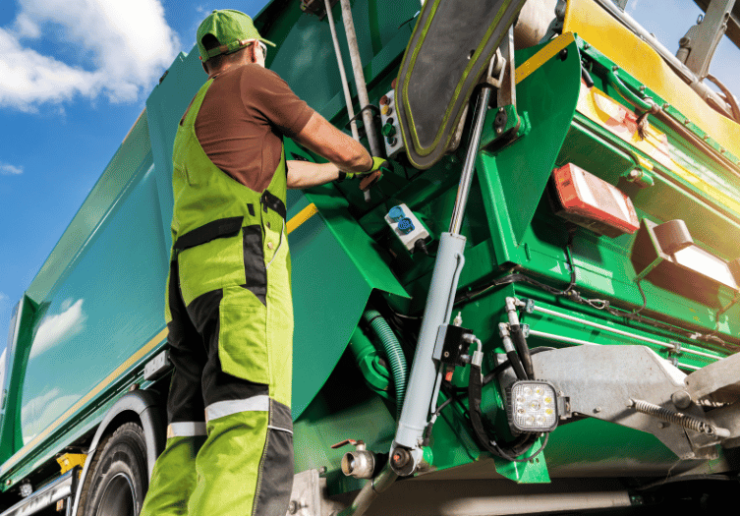Kloeckner Metals is proud to supply metals to the North American refuse and recycling industries.

According to the EPA, recycling and refuse account for nearly 757,000 jobs, $6.7 billion in tax revenue, and $36.6 billion in wages. Recycling and refuse products include transporters, specialized processing facilities, and manufacturers of various recycled products. Recycling and refuse are unrecognized pillars of our society and environmental and economic success stories. Kloeckner Metals is proud to service both industries.
Answer:
Recycling transporters are vehicles or equipment that are used to collect, transport and deliver recyclable materials from collection points to recycling facilities. These vehicles or equipment may include trucks, trailers, containers, and other specialized equipment that is designed to handle recyclable materials. The type of recycling transporter used will depend on the specific materials being collected, the distance they need to be transported, and the recycling facility they will be delivered to. Examples of recycling transporters include:
Answer:
Recycling processing facilities can vary in size and design, depending on the type of materials they are processing and the equipment they use. However, in general, they typically include the following components:
The design and layout of a recycling facility will depend on the type of materials being processed and the equipment used. Some facilities are more automated and use conveyors, robotic arms and other advanced technologies, while others are more manual and rely on human labor.
Answer:
Pressure vessels are used in landfill gas processing.
What are recycling transporters?
Answer:
Recycling transporters are vehicles or equipment that are used to collect, transport and deliver recyclable materials from collection points to recycling facilities. These vehicles or equipment may include trucks, trailers, containers, and other specialized equipment that is designed to handle recyclable materials. The type of recycling transporter used will depend on the specific materials being collected, the distance they need to be transported, and the recycling facility they will be delivered to. Examples of recycling transporters include:
What is a specialized processing facility?
Answer:
Recycling processing facilities can vary in size and design, depending on the type of materials they are processing and the equipment they use. However, in general, they typically include the following components:
The design and layout of a recycling facility will depend on the type of materials being processed and the equipment used. Some facilities are more automated and use conveyors, robotic arms and other advanced technologies, while others are more manual and rely on human labor.
How is PVQ steel plate used in the recycling & refuse industry?
Answer:
Pressure vessels are used in landfill gas processing.
What is Plasma? Before we can answer what is plasma cutting, we have...
Today is my birthday. So what better way to celebrate than to talk...
The main benefit of Kloeckner Metals Santa Fe Springs’ new 52-foot Cincinnati Press...
This past year, Kloeckner Metals’ Santa Fe Springs Branch upgraded their facility with...

X
The Kloeckner Metals website uses modern technologies. Unfortunately, your browser doesn't support those technologies.
Download the latest version of one of these browsers to experience the site: